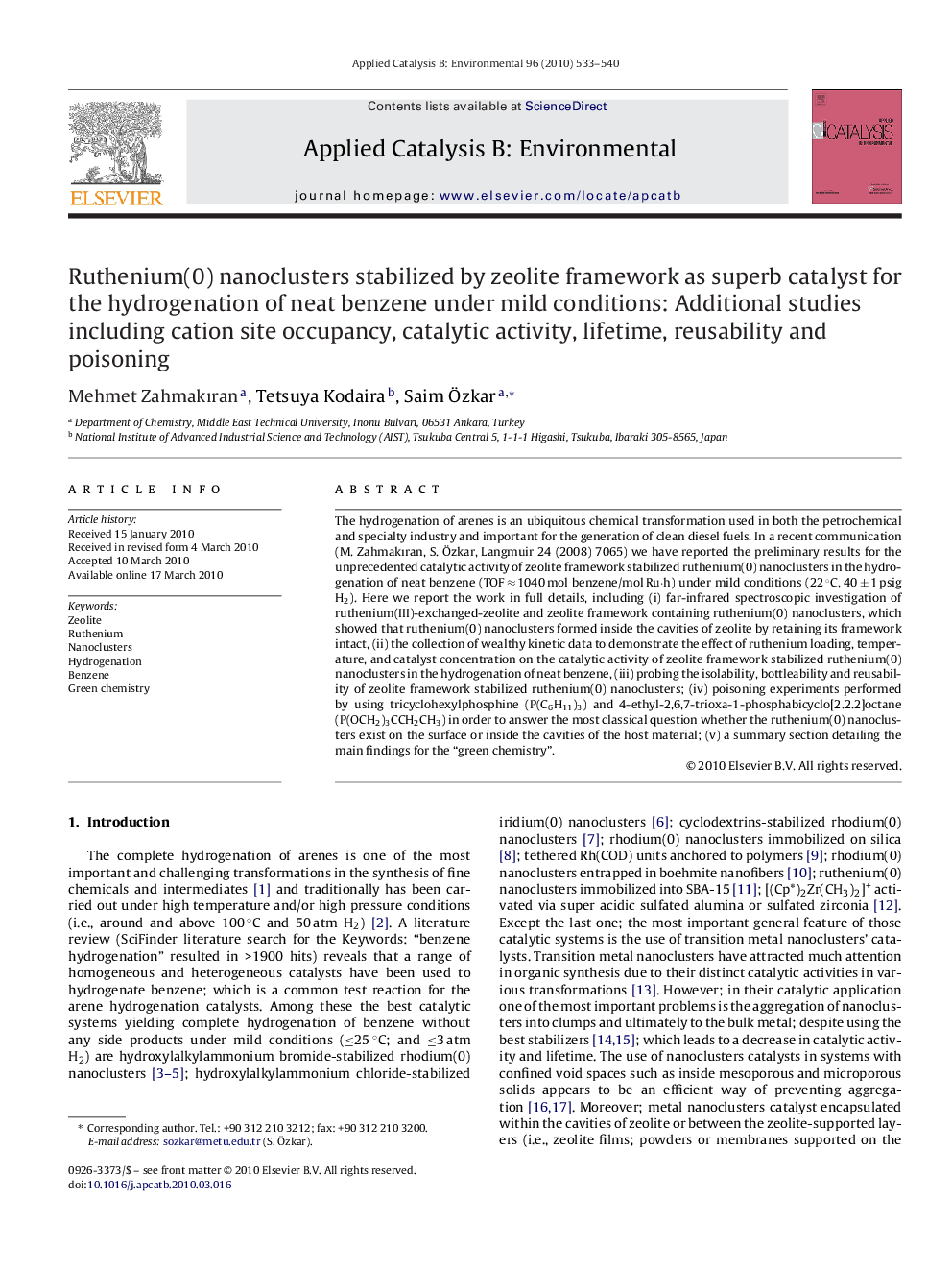| کد مقاله | کد نشریه | سال انتشار | مقاله انگلیسی | نسخه تمام متن |
|---|---|---|---|---|
| 47399 | 46470 | 2010 | 8 صفحه PDF | دانلود رایگان |

The hydrogenation of arenes is an ubiquitous chemical transformation used in both the petrochemical and specialty industry and important for the generation of clean diesel fuels. In a recent communication (M. Zahmakıran, S. Özkar, Langmuir 24 (2008) 7065) we have reported the preliminary results for the unprecedented catalytic activity of zeolite framework stabilized ruthenium(0) nanoclusters in the hydrogenation of neat benzene (TOF ≈ 1040 mol benzene/mol Ru·h) under mild conditions (22 °C, 40 ± 1 psig H2). Here we report the work in full details, including (i) far-infrared spectroscopic investigation of ruthenium(III)-exchanged-zeolite and zeolite framework containing ruthenium(0) nanoclusters, which showed that ruthenium(0) nanoclusters formed inside the cavities of zeolite by retaining its framework intact, (ii) the collection of wealthy kinetic data to demonstrate the effect of ruthenium loading, temperature, and catalyst concentration on the catalytic activity of zeolite framework stabilized ruthenium(0) nanoclusters in the hydrogenation of neat benzene, (iii) probing the isolability, bottleability and reusability of zeolite framework stabilized ruthenium(0) nanoclusters; (iv) poisoning experiments performed by using tricyclohexylphosphine (P(C6H11)3) and 4-ethyl-2,6,7-trioxa-1-phosphabicyclo[2.2.2]octane (P(OCH2)3CCH2CH3) in order to answer the most classical question whether the ruthenium(0) nanoclusters exist on the surface or inside the cavities of the host material; (v) a summary section detailing the main findings for the “green chemistry”.
Journal: Applied Catalysis B: Environmental - Volume 96, Issues 3–4, 7 June 2010, Pages 533–540